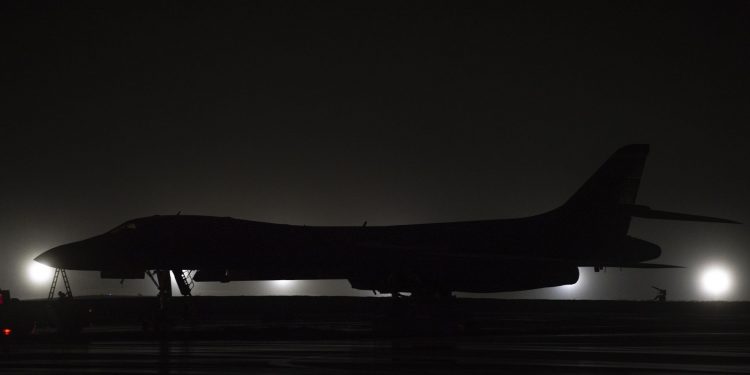JOINT BASE PEARL HARBOR-HICKAM, Hawaii: B-1B Lancers returned to the Indo-Pacific region May 1 to conduct bomber task force operations out of Andersen Air Base, Guam.
Four bombers and approximately 200 Airmen from the 9th Bomb Squadron, 7th Bomb Wing, Dyess Air Force Base, Texas, deployed to support Pacific Air Forces’ training efforts with allies, partners and joint forces; and strategic deterrence missions to reinforce the rules-based international order in the Indo-Pacific region.
Three B-1Bs flew to Andersen AFB while one split off and flew down east of Japan to conduct training with U.S. Navy assets operating in the region before heading to Andersen AFB.
“Deployments like this allow our Airmen to enhance the readiness and training necessary to respond to any potential crisis or challenge across the globe,” said Col. Ed. Sumangil, 7th BW commander. “It also provides a valuable opportunity to better integrate with our allies and partners through joint and combined operations and exercises.”
In line with the National Defense Strategy objectives of strategic predictability and operational unpredictability, the Bomber Task Force enables a mix of different types of strategic bombers to operate forward in the Indo-Pacific region from a broader array of overseas and continental U.S. locations with greater operational resilience.
“The B-1 provides all of the training opportunities which the B-52 (Stratofortress) provided, plus the ability to train to advanced standoff, anti-surface warfare with (Long Range Anti-Surface Missiles),” said Lt. Col. Frank Welton, PACAF’s chief of operations force management.
The B-1 can carry the largest conventional payload of both guided and unguided weapons in the U.S. Air Force.
“The B-1 is able to carry a larger payload of Joint Air-to-Surface Standoff Missiles and a larger payload of 2,000-pound class Joint Direct Attack Munitions,” Welton said. “Additionally, the B-1 is able to carry the LRASM, giving it an advanced standoff, counter-ship capability. It also has an advanced self-protection suite and is able to transit at supersonic speeds to enhance offensive and defensive capabilities.”
The last time the B-1s were deployed to the region was in 2017. Bombers from the 9th Expeditionary Bomb Squadron supported missions from Andersen AFB, conducting multiple sequenced bilateral missions with the South Korean air force and the Japan Air Self-Defense Force.
“Our wing has conducted, and participated in, a variety of exercises over the last year to ensure we are primed for large-scale missions such as this one,” Sumangil said. “We’re excited to be back in Guam and proud to continue to be part of the ready bomber force prepared to defend America and its allies against any threat.”
The last BTF deployed to the Pacific was in January 2019 when three B-2 Spirits and approximately 200 Airmen from the 393rd Bomb Squadron from Whiteman AFB, Missouri, deployed to Hawaii. The squadron conducted 37 sorties for a total of 171 hours. Eight of the missions were integration operations with F-22 Raptors from the 199th Fighter Squadron, 154th Wing, Hawaii Air National Guard.











